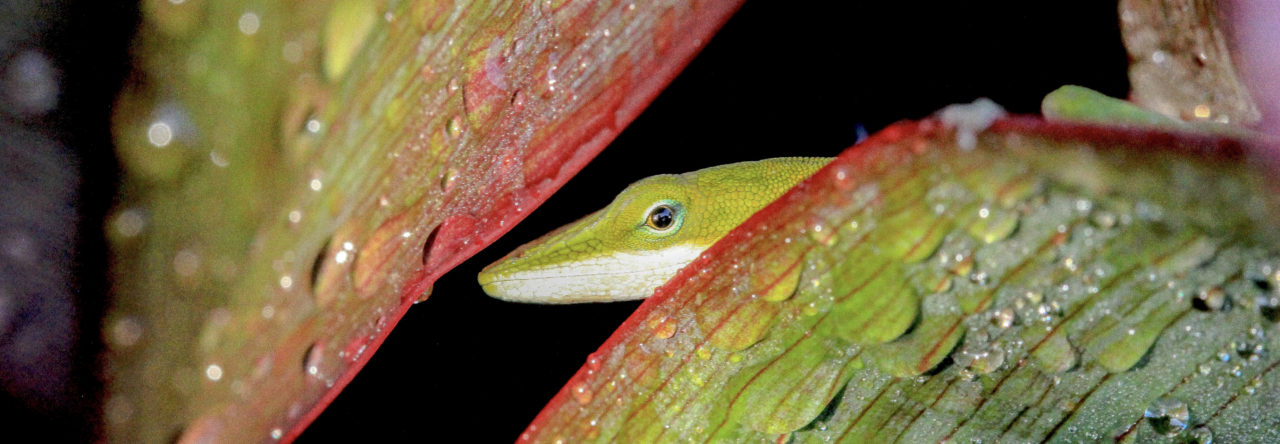Animals regularly need to communicate with one another (both within and between species) and have developed a variety of signals, some quite elaborate, for doing so. In some cases, we see extensive variation in these signals across the range of a species, raising the questions of how and why this occurs. As Julienne Ng, Emily Landeen, Ryane Logsdon, and Rich Glor explain in a new Evolution paper, there are essentially three possible explanations. Signals may diverge due to random drift, the pressures of sexual selection, or adaptation to local signaling conditions. The latter possibility, in which signals evolve to match local habitat or environmental conditions, is a particularly interesting scenario.
In their study, Ng et al. examined geographic variation in the dewlaps of Anolis distichus, which vary from yellow to orange/red across Hispaniola. They recorded reflectance spectra from the dewlaps of 36 different populations, extracted annual precipitation, surface temperature, and percent tree cover variables from GIS data layers, and tested for associations between dewlap and environmental variation. Because dewlap variation could potentially be influenced by the relatedness of two populations in space or through shared ancestry, Ng et al. also corrected their data sets to remove the effects of spatial autocorrelation and phylogenetic relationships, important extra steps that will hopefully become commonplace in future studies.
It turns out that in drier habitats, A. distichus display smaller, brighter, yellow dewlaps, whereas in wetter habitats, they display larger, less bright, orange dewlaps. Dewlaps also tended to be more orange in cooler environments with more tree cover. Interestingly, this pattern is actually opposite that observed by Leal and Fleishman (2004) in A. cristatellus on Puerto Rico, which have brighter dewlaps in drier areas. Thus, like any good study, this one raises a series of interesting new questions in the course of answering several others. As Ng et al. point out, it will be interesting to see what future studies tell us about the mechanistic underpinnings of environmentally-associated dewlap divergence.
Finally, I think that the first line in Ng et al.’s paper is an especially good one: “Signals involved in sexual selection and species recognition – the peacock’s tail, the rhinoceros beetle’s horn, and the swordtail’s sword, to name just a few – are some of evolution’s most spectacular outcomes.” Hopefully, with the impressive recent work done on its ecologically and evolutionarily important variation, researchers in other systems will take note that the anole’s dewlap clearly deserves to be added to this list too.
Ng, J., Landeen, E. L., Logsdon, R. M. and Glor, R. E. 2012. Correlation between Anolis lizard dewlap phenotype and environmental variation indicates adaptive divergence of a signal important to sexual selection and specie recognition. Evolution. doi: 10.1111/j.1558-5646.2012.01795.x
Leal, M., and Fleishman, L.J. 2002. Evidence for habitat partitioning based on adaptation to environmental light in a pair of sympatric lizard species. Proc. R. Soc. Lond. Ser. B 269:351–359.

















